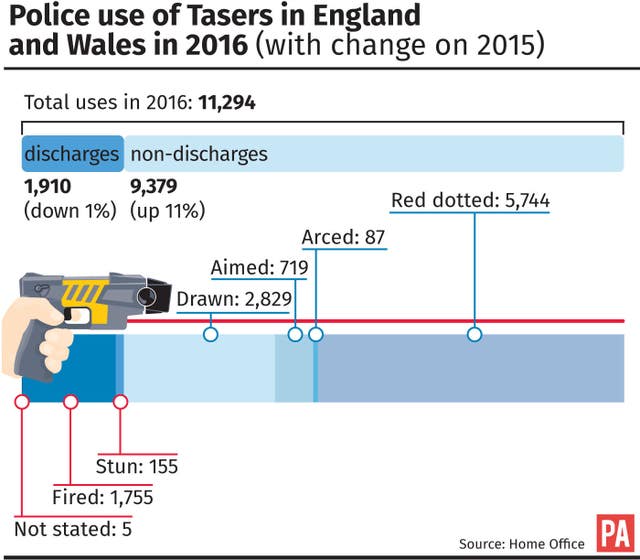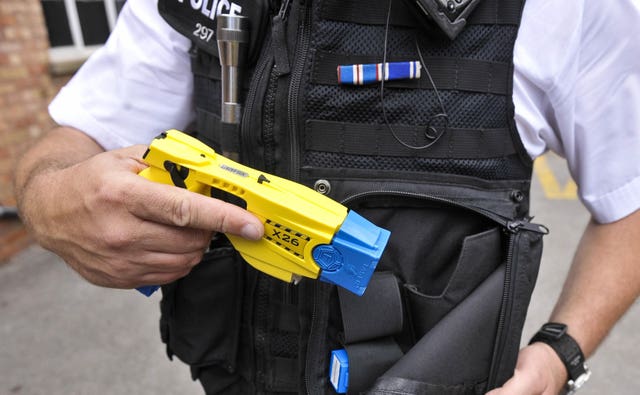
A police officer who was stabbed several times in a machete attack in east London managed to Taser his attacker despite his injuries.
Here are some facts about the weapons:
– What are Tasers?
Tasers – or conductive electrical devices (CEDs) – are weapons with a 50,000-volt electrical charge and temporarily incapacitate a person, in most cases causing them freeze and fall to the ground.
They are battery-powered.

– How do they work?
When Tasers are fired, two metal barbs connected to the weapon by a thin wire pierce the skin before the charge is delivered.
Similar in shape to a pistol, once discharged the electrical current interferes with the neuromuscular system within the body, which in turn should subdue an individual.
According to the City of London Police website, when the Taser current travels across the human body, the peak voltage drops to 1,200.

– What type of Taser is used by police in England and Wales?
Both the Taser X26 and Taser X2 have been authorised by the Home Office for use by specially trained officers in England and Wales.
It was announced in December 2014 that production and sales of the X26 model would be discontinued by the American company behind the weapon.
As a result, in 2017 the Home Office gave the go-ahead for use of the X2 model as a replacement, which unlike the X26 can be fired twice if it misses or does not subdue the target on the first go.
According to the Metropolitan Police it was the X2 used by the officer in the incident in Leyton, east London, on Thursday.

– How long have they been in use?
Tasers were first introduced in Britain in 2003 and were initially only available for use by firearms officers.
Then in 2008 the green light was given for Tasers to be used and carried by all frontline officers in England and Wales who had completed the relevant training.
– When are Tasers used by officers?
When a Taser is removed from its holder, it is often the case that officers have to justify this action – with all uses reported to the Home Office, according to City of London Police.
The force also described Tasers as “an additional tactical option” which “allows officers to manage situations where violence is threatened or likely from a safe distance”.
According to a House of Commons briefing paper published in 2016, the use of a Taser for any reason other than mitigating a threat of violence may engage Article 3 of the European Convention on Human Rights – the prohibition of torture, inhumane or degrading treatment.
The paper added that any use of the Taser “must be proportionate, lawful, accountable and absolutely necessary”.

– How many times have police used Tasers?
According to the Police Use of Force Statistics for April 2017 to March 2018, X26 Tasers were used in 17,000 incidents in England and Wales – but were not discharged in 15,000 of those instances.
When they were used, the most common reasons included the protection of the officer and to assist in making an arrest.

– Is there support for Tasers?
Taser use has been at the centre of controversy in the past after a number of deaths.
Surveys carried out by rank-and-file police associations have indicated that there is strong support for the equipment to be issued to more frontline officers.
– Can anyone own a Taser?
The Taser is a banned weapon in Britain. Members of the public caught in possession, purchasing, transferring or selling one without authorisation from the Secretary of State can be imprisoned.


Comments: Our rules
We want our comments to be a lively and valuable part of our community - a place where readers can debate and engage with the most important local issues. The ability to comment on our stories is a privilege, not a right, however, and that privilege may be withdrawn if it is abused or misused.
Please report any comments that break our rules.
Read the rules hereComments are closed on this article